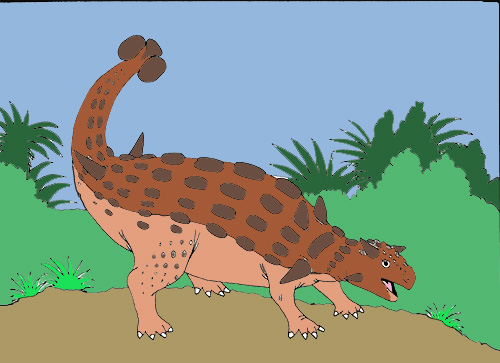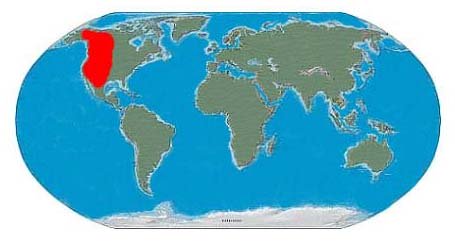Sign up for Lesson Plans, discounts & more!
Ankylosaurus
Armored Tank of Dinos

Ankylosaurus was first discovered by paleontologist Barnum Brown, in the early 1900s. Since the discoverer gets to name the discovery Brown gave the name. As with most dinosaurs, its name comes from the Greek ‘ankulos,’ meaning stiff or fused, and ‘sauros,’ meaning lizard. Brown found that the bones in the skull and other parts of the body were fused, increasing their strength, thus naming the specimen ’fused lizard.’
Ankylosaurus were about 20-30 feet long and weighed up to 8 tons. These dinosaurs were not very tall, compared to, say T-Rex. It walked on four short legs and had wide, stalky body.
They lived at the end of the Cretaceous Period, around 66 million years ago, and were one of the last dinosaurs to roam the earth.
The Ankylosaurus Timeline
Mesozoic |
||
Triassic |
Jurassic |
Cretaceous |
Ankylosaurus Armor
Ankylosaurus had boney plates on their back. These plates were embedded into the skin which helped protect the them against attackers. Sound familiar? Stegosaurus also had similar plates, called osteoderms, too. Osteoderms are actually skin that has hardened, and mostly used to as protection. When compared to stegosaurus, Their plates were much smaller in diameter and stood about half as tall. Imagine a thimble versus a dinner plate. They also laid flat against their back, while stegosaurus plates stood upright on end.
Their plates of armor weren't the only thing that these dinos had in common. These two dinosaurs belonged to a group called thyreophora. Thyreophora is a group of dinosaurs that were bird-hipped, living from the early Jurassic until the end of the Cretaceous. Both were plant-eaters too. So many things in common, its a shame they lived 100 million years apart.
Name |
Ankylosaurus |
Classification |
Thyreophora |
Food |
Herbivore |
Length |
20-30 feet |
height |
5.6 feet |
weight |
8 tons |
Range |
Western North America |
Time Period |
Late Cretaceous Period |
Ankylosaurus also had a huge club on the end of its tail. This was also very handy in combat, and to protect against enemies. It was composed of two large osteoderms, with a row of small osteoderms at the midline, and two small osteoderms at the tip. Basically, like having a very big built in hammer on the end of your body.

Ankylosaurus Fossil Locations
Back to Dinosaur Central
Back to Fossilicious
Check out some of the Educational Materials for sale on our sister site fossilicious.com.

interested in more? If so, you may want to check out our other sites:
fossilicious.com - Our online fossil and mineral rock shop.
rocksandminerals4u.com - An educational site about rocks, minerals, and geology.
Geologic Time Geologic Time Line
Cenozoic Era
Quaternary
Neogene
Paleogene
Mesozoic Era
Cretaceous
Jurassic
Triassic
Paleozoic Era
Permian
Carboniferous
Devonian
Silurian
Ordovician
Cambrian
Archean Time
Hadean Time
Teachers Resources
Activities for Education and Fun
Earth Science Lesson Plans
Activities For Kids
Fossil Lesson Plans
Fossil Activities
Education Articles
Coloring Pages
Dinosaur Coloring Pages
Montessori Materials
Geology Club
Fossil Hunting
 |
 |
 |




